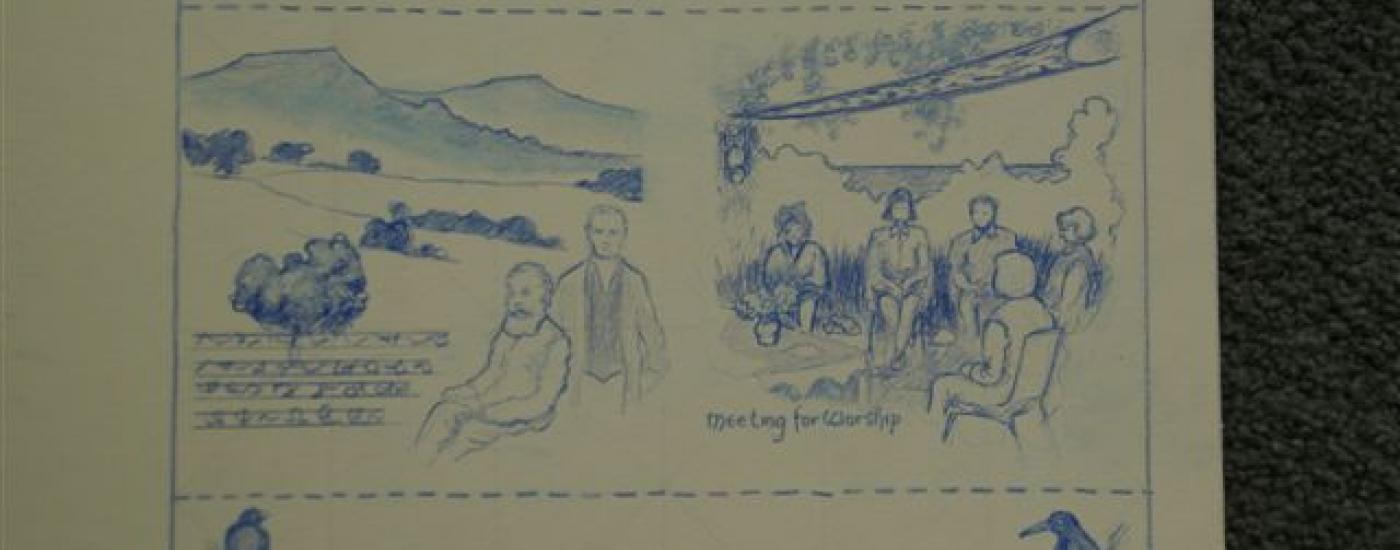You are here
Kiama Recognised Meeting

Backhouse and Walker walked through this part of NSW in Spring of 1836, sharing the gospel with scattered settlers, bond and free; promoting temperance; exploring and recording the lives of the Dharanwal people.
On the left of the panel Backhouse is seated and Walker stands, with the backgroupnd of the escarpment behind Woolongong, Mr Kembla in the foreground and Mt Keira in the backgroound. This steep escarpment was a challenge facing exploriers. They used a track now called Bulli Pass, so rough that they were lowering their equipment down by ropes from tree to tree. Their journals tell us how they travelled between there and Kiama, finding swamps, creeks and wild country inhabited by black people who didn't know God, black snakesi abundance, giag stinging trees and cabbage palms.
They were walking through what is now referred to as the Long Brush, a vast area of dense bush that has now been cleared and exists only as remnants. This part of their trip was with the assistance of an Aboriginal guide called 'Tommy', who came from Kangaroo Valley. The travellers wrote extensively and descriptively of the First Nation people they met along the way, the Wadi Wadi of the Dharanwal nation. They noted that the population was less than a third of what it had been just a few years before.
Backhouse and Walker stayed overnnight on the 27th of September, 1936, at Kyama (later Kiama) before heading further south. The settlement consisted of a few bark huts, a blacksmith, a shoemaker, a constable station. They stayed with Thomas Kendall, son of a NZ missionary, visited the Hindmarsh family in Gerringong, then walked barefoot along Seven Mile Beach, having washed off mud from trousers and boots at Crooked River at Gerroa, and on to visit Alexnder Barry on his 40,000 acre property at what is now Shoalhaven Heads.
On the right side of the panel we see Kiama Recognised Meeting for Worship. Friends have been meeting for over 20 years at the Kiama Pre-school, usually in the covered outside courtyard area. In the background is the Pacific Ocean. Meeting outside enables Friends to feel connected to the environment and local community.
The rainbow lorikeets at the bottom represent the many birds who contribute musical ministry to worshippers during the Silent Worship and the grevillia represents the flora of the area. The owl sat for many years in the pre-school tree.
This panel was designed by Alan Lawrence. It was begun by Audrey Wilson, Liz Henigan, Ann Britton and Shieila McGee. When they were no longer able to continue, it was taken up by Moira Darling who is continuing the work.
